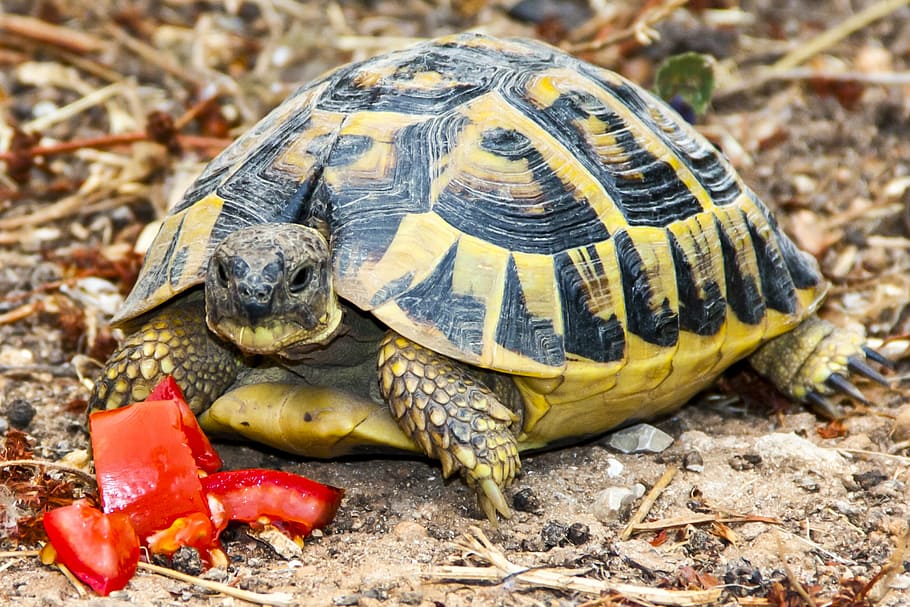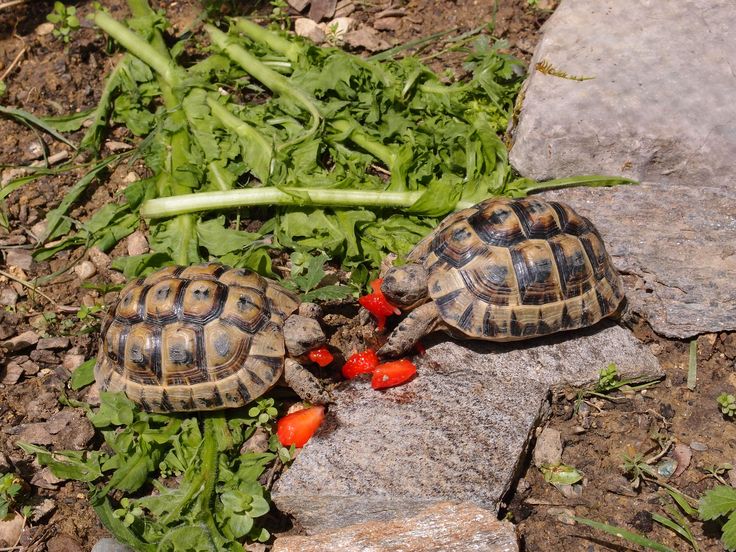Table of Contents
ToggleIntroduction
Turtles are intriguing creatures with various food preferences, leaving pet owners to wonder what they should feed their turtles. Whether or not turtles may safely consume the delicious and much-valued fruit, the tomato is one such mystery that frequently arises. Can Turtles Eat Tomatoes? Testudines, where turtles are classified, have shown extraordinary dietary flexibility over time. Vegetation, insects, and even tiny aquatic animals are all part of the slow-moving reptiles eclectic diet.
Turtles Have Different Diets
Turtles, encompassing many species, showcase a remarkable diversity in their dietary requirements. While some are primarily herbivores, relying on a diet rich in vegetation, others are carnivores seeking a protein-heavy menu. Additionally, some turtles fall in between as omnivores, blending plant and animal matter into their diets.
Herbivorous Turtles: Herbivorous turtles, such as the Green Sea Turtle, thrive on a diet predominantly composed of plants. Leafy greens, vegetables, and fruits comprise most of their nutritional intake. A well-balanced mix of these food items ensures their overall health and development.
Carnivorous Turtles: Carnivorous turtles, like the Snapping Turtle, rely heavily on a protein-rich diet. It includes various aquatic insects, small fish, and even smaller amphibians. Meeting their high protein needs is vital for their growth, energy, and maintenance of their specialized hunting behaviors.
Omnivorous Turtles: Many turtle species, including the Red-eared Slider, fall into the omnivorous category. They require a balanced diet that incorporates both plant and animal matter. A mix of leafy greens, vegetables, and occasional protein sources such as insects or small fish caters to their diverse nutritional needs.
Common Turtle Dietary Habits

Turtles, regardless of their species, exhibit certain common dietary habits that are essential to their well-being.
Basking and Digestion: Many turtles use basking, soaking up sunlight to regulate their body temperature. This activity not only aids in digestion but also supports the synthesis of essential vitamins like Vitamin D, crucial for their overall health.
Hydration and Feeding: Turtles often consume water while feeding. Whether munching on greens or capturing prey, their feeding habits connect one another with hydration. Providing a clean water source for drinking and swimming is essential to meet their hydration needs.
Variety in Diet: A varied diet is key to ensuring turtles receive a broad spectrum of nutrients. When applicable, offering a mix of vegetables, fruits, and proteins helps prevent nutritional deficiencies and promotes a robust immune system.
Feeding Frequency: The frequency of feeding varies among turtle species. While some turtles may require daily meals, others may thrive on a less frequent feeding schedule. Understanding the species’ specific needs is crucial to avoid overfeeding or underfeeding.
Turtle Survival Nutrients
All living things, including turtles, need various nutrients to stay healthy. These nutrients are vital for growth, making energy, keeping the nervous system healthy, and staying physically fit. Figuring out what turtles need helps give them food that works with their unique biology.
Proteins: Proteins are important for all animals, but carnivore turtles need them even more because they eat meat. In the process, they help muscles, shells, and organs grow. Proteins are an important part of a healthy diet for omnivores and vegetarians because they help the body do many things.
Calcium: A turtle’s food must include calcium because it is important for building and maintaining the shell and bones. Not getting enough calcium can cause shell defects and other health problems. Turtles that don’t get enough calcium from their natural food may need supplements or foods that are high in calcium.
Vitamins: Turtles need different kinds of vitamins for many things, like keeping their metabolism going, keeping their defense systems strong, and staying healthy overall. Vitamins A, B, and C are crucial for maintaining the face, eyesight, and immune system healthy.
Fiber: Turtles that eat plants need a lot of fiber to digest their food properly. Leafy greens and veggies give them the fiber they need to keep their digestive health in good shape.
A Balanced Diet’s Importance
A turtle’s health and longevity depend on it eating a balanced food. Turtles get all the nutrients they need in the right amounts when they eat various foods. It is important to consider what the turtle species needs to eat, its age, and its health.
Ideal Growth and Development: Giving turtles, especially young ones, a balanced food helps them grow and develop properly. It gives the shell, bones, and organs the building blocks they need to be strong and healthy.
Disease Prevention: Turtles’ immune systems are stronger when they get enough food, which helps them avoid getting infections and diseases. If they don’t get enough of certain nutrients, their immune system can get weaker, making them more likely to get sick.
Reproductive Health: A balanced food is very important for turtles wanting babies. The females’ eggs grow better with the right nutrition, and the breeding pair stays healthy overall.
Poor Nutrition Dangers
Not giving turtles the necessary food can cause many health problems and hurt their well-being.
Deformities in the shell: Not enough calcium can make shells soft or misshapen. It is called metabolic bone disease. It changes how the turtle looks and makes its bones weaker.
Organ Failure: Not getting enough of certain nutrients can damage organs and cause other problems inside the body. If turtles don’t get enough of certain nutrients, their liver, kidneys, and other important systems may have problems.
Weak Immune System: Turtles’ immune systems get more fragile when they don’t get enough food, which makes them more likely to get infections and diseases. It can make it much less likely for them to survive in the wild or lower their quality of life when they are in storage as pets.
Problems with reproduction: Turtles bred but not getting enough to eat may have trouble laying and hatching eggs. It can make it impossible to have children and hurt the health of the whole community.
Conclusion
High in critical nutrients, including antioxidants, minerals, and vitamins, Tomatoes can be a healthy supplement to a turtle diet if consumed in moderation. The variety of tomato varieties offers adaptability, providing a variety of textures and tastes for these amazing reptiles. However, caution is required because tomatoes include oxalates and solanine, which can harm turtles by interfering with calcium absorption and creating digestive difficulties. Tomato acidity may potentially be an issue for turtles with delicate digestive systems. As a result, when integrating tomatoes into a turtle’s diet, moderation is essential.







